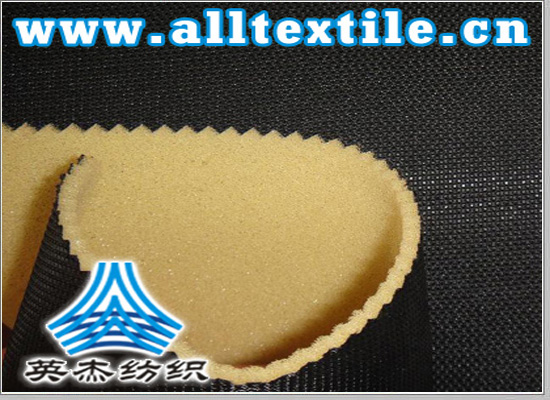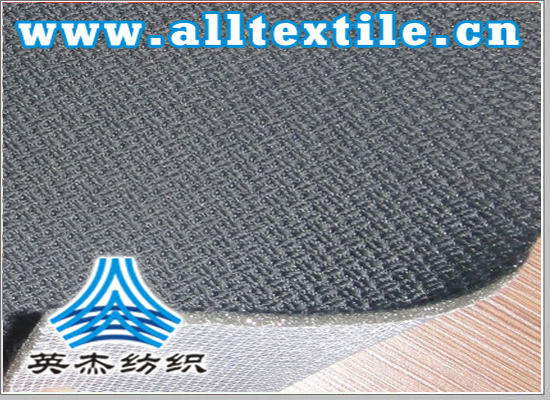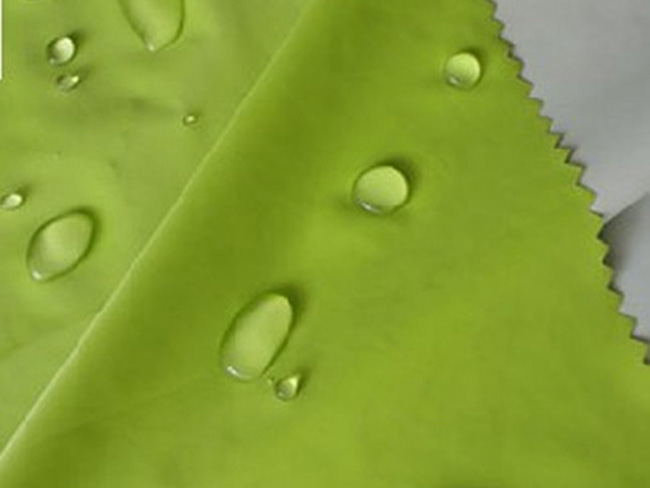Introduction to waterproof strips for medical disposable protective clothing
Medical protective clothing is a type of chemical protective clothing and is mainly used by medical staff. The ideal medical protective clothing should be multi-functional. It should not only protect medical staff from toxic and harmful liquids, gases or infectious viruses and microorganisms, but also be comfortable to wear. While having barrier properties, it should also have Breathable, antibacterial and hypoallergenic, and must not harm human health. In addition, the selection of protective clothing fabrics must also consider cost and environmental issues after disposal.
Medical protective clothing is required to achieve “three resistances and one resistance”, that is, water-repellent, blood-repellent, alcohol-repellent and anti-static medical protective clothing. Different from ordinary woven materials, it uses special composite materials, which can be compounded by different materials. For example, with Polyethylene/polypropylene spunbond nonwoven fabric is compounded with breathable microporous film or other nonwoven fabrics, or spunlace nonwoven fabric is compounded with breathable microporous film, or wood paddle is used to compound spunlace nonwoven fabric. The nonwoven materials used in several types of medical protective clothing currently being sold and developed in the domestic market include the following:

◆Polypropylene spunbond fabric
◆Spunlaced fabric composed of polyester fiber and wood pulp
◆Polypropylene spunbond-meltblown-spunbond composite nonwoven fabric, namely SMS or SMMS
◆Polymer coated fabric
◆Polyethylene breathable film/nonwoven composite fabric
◆ TPU breathable film/non-woven composite fabric

Common medical protective clothing is usually a one-piece structure composed of a hat, a top, and pants. There are strict standards in production, including protection (sealing), wearability, safety and hygiene. Medical protective clothing can be produced by cutting, sewing, elasticizing, and gluing strips. The processes involved are inseparable from these three processes: flat seams, overlock seams, and gluing.
The reason why protective clothing can achieve such a high sealing performance is inseparable from this most important step: gluing. After the workers sew the protective clothing, they need to use a heat sealing machine to seal all the stitches and pinholes in the protective clothing to prevent dust or liquid from entering through the sewing pinholes and enhance the isolation performance and use of the protective clothing. Safety. As shown in the figure below, the heat sealing strip is hot-pressed on the pinhole position of the protective clothing through a heat sealing machine to ensure that the pinhole position is sealed.
As the novel coronavirus pneumonia outbreak spreads, the demand for medical supplies has surged in various places. The most urgent need is medical protective clothing. During the Spring Festival, imported protective clothing and stockpiles of protective clothing played an important role, and subsequent supply of protective clothing was mainly domestic. The Ministry of Industry and Information Technology has taken the following measures:
1. Increase efforts to increase production and capacity;
2,�Properly connect supply and demand and make every effort to ensure the needs for epidemic prevention and control;
3. Strengthen the control of the entire allocation process to ensure that key medical supplies are fully controllable and arrive on time.
In view of the current shortage of medical protective clothing, many clothing companies have responded to the national call and began to switch to the production of “protective clothing”, while working overtime to increase production capacity. The official website of the Ministry of Industry and Information Technology also released the “Invitation for Collection of Information on Layers for the Production of Medical Protective Clothing” on February 9, stating that the production of medical protective clothing has increased, but it is still difficult to meet the current needs for epidemic prevention and treatment. Among them, there is a lack of layering machines (also known as hot air Seam sealing machine, stripping machine, heat sealing machine) and supporting heat sealing strips are bottlenecks that restrict production and capacity expansion.
The most popular disposable medical protective clothing materials on the market include the following:
The sealing processes corresponding to these materials are also different. Polypropylene non-woven fabrics and SMS non-woven fabrics can be edge-sealed by hot pressing, that is, the two layers of fabrics are heated by a hot press and directly bonded together. The hot-pressed area will cause hydrostatic pressure fluctuations due to insufficient uniformity of hot-pressing.
Polyethylene microporous film/non-woven fabric needs to be sealed by heat sealing. Use a heat sealing machine to press the polyethylene heat sealing tape dedicated to the polyethylene microporous film (hereinafter collectively referred to as the PE heat sealing tape) at the seam. line position to ensure tightness.
TPU film/non-woven fabric is sealed in the same way as polyethylene microporous film/non-woven fabric. Use a heat sealing machine to press the TPU heat sealing tape at the suture position to ensure tightness.
PE heat seal strip
PE heat sealing strips need to be used with polyethylene microporous film/non-woven fabric.
The production method of PE heat sealing strips is to apply hot melt adhesive on a special base material, which is mainly divided into polyester + hot melt adhesive, EVA + hot melt adhesive and PE/EVA + hot melt adhesive. The base material is produced first, and then the hot melt adhesive is compounded to the surface of the base material. The polyolefin hot melt adhesive used is also called TPR in the industry.
First, fabrics need to be manufactured, dyeed and finished. This belongs to the textile industry, and the production speed is greatly restricted. The hot melt adhesive applied at the same time has a very low melting point of 50-70°C. Most of them are produced by scraping. The base material is produced first, and then the hot melt adhesive material is melted with a solvent, then scraped onto the surface of the substrate, and then dried. After drying, roll it into a roll; you can also use cast extrusion to cast the hot melt adhesive material on the surface of the substrate, and then roll it up into a large roll. Finally, cut the large roll of tape into small rolls of tape. Because the production process starts from fiber manufacturing, weaving, dyeing and finishing, to resin synthesis, processing and coating, the industrial chain is relatively long and the process is complex. Since TPR resin has low strength, the fabric layer must provide the basic strength, so fabric and resin are indispensable.
The scraping production process of PE heat sealing strips has several main disadvantages. The production process contains solvents, which will pollute the environment. If the solvent evaporates incompletely, there may be residues; the scraping production method is less efficient, 5 meters. /minute, seriously affecting efficiency. Cast extrusion hot melt adhesive material flows on the substrate. The melting point of the hot melt adhesive material is too low 50-70°C, making it difficult to process and the production speed is relatively slow.
Because the melting point of polyethylene material is low (100-120°C), the temperature setting of the heat sealing machine is also relatively low, and the speed of the rubber strip will be 5-8 meters/minute slower. If it is too fast, the micropores of the polyethylene may be burned. The film causes water leakage, and processing requires relatively high proficiency and technical requirements for workers.

TPU heat sealing strip
TPU heat sealing tape needs to be used with TPU film/non-woven fabric, because TPU tape and PE film are incompatible and cannot be bonded.
It is relatively simple to produce waterproof TPU heat sealing strips. Use TPU blown film or TPU casting production equipment to make a film, and then cut it into small rolls. The production speed of a TPU film-making equipment is about 15 meters/minute (converted into strip width equivalent to 100-120 meters/minute), which is much faster than PE heat-sealing strips. Moreover, TPU film production equipment is very versatile, and production capacity is not a problem at all. TPU heat sealing strips can have a two-layer structure, one layer is high-temperature TPU, which provides excellent barrier properties and strength, and the other layer is low-temperature hot-melt adhesive TPU, which provides excellent welding fastness and lamination speed. Because the tensile strength of TPU is very high, usually up to 30 to 50 MPa, which is 5 to 6 times higher than TPR, the TPU waterproof strip does not require a plant layer at all, and its own strength is sufficient to meet the requirements of waterproofing and penetration resistance ( The casual mountaineering clothes currently on the market all have such a structure). Moreover, the TPU industry has achieved great development in China. From the synthesis of raw materials to various production equipment, the technical level of film-making enterprises is very high, the products are very cost-effective, and they are also very competitive internationally.
The melting point of high-temperature TPU film is 150-170°C, which is much higher than that of polyethylene film and low-temperature hot melt adhesive TPU.
The melting point can be selected from 70-120°C, so the speed of the rubber strip can reach about 15 meters/minute, the efficiency is greatly improved, and the processing difficulty is relatively low.
��. The production speed of a TPU film-making equipment is about 15 meters/minute (converted into strip width equivalent to 100-120 meters/minute), which is much faster than PE heat-sealing strips. Moreover, TPU film production equipment is very versatile, and production capacity is not a problem at all. TPU heat sealing strips can have a two-layer structure, one layer is high-temperature TPU, which provides excellent barrier properties and strength, and the other layer is low-temperature hot-melt adhesive TPU, which provides excellent welding fastness and lamination speed. Because the tensile strength of TPU is very high, usually up to 30 to 50 MPa, which is 5 to 6 times higher than TPR, the TPU waterproof strip does not require a plant layer at all, and its own strength is sufficient to meet the requirements of waterproofing and penetration resistance ( The casual mountaineering clothes currently on the market all have such a structure). Moreover, the TPU industry has achieved great development in China. From the synthesis of raw materials to various production equipment, the technical level of film-making enterprises is very high, the products are very cost-effective, and they are also very competitive internationally.
The melting point of high-temperature TPU film is 150-170°C, which is much higher than that of polyethylene film and low-temperature hot melt adhesive TPU.
The melting point can be selected from 70-120°C, so the speed of the rubber strip can reach about 15 meters/minute, the efficiency is greatly improved, and the processing difficulty is relatively low.



